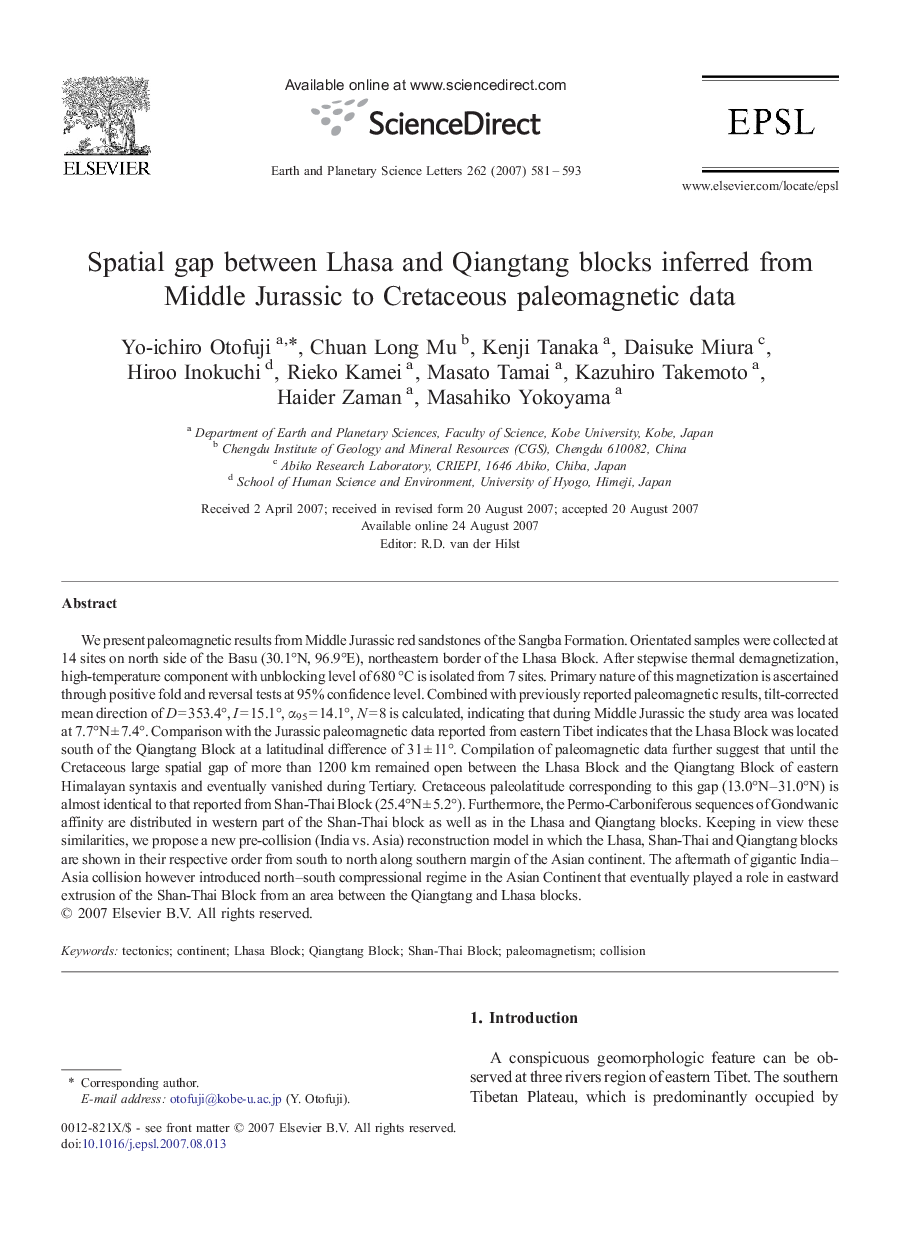| کد مقاله | کد نشریه | سال انتشار | مقاله انگلیسی | نسخه تمام متن |
|---|---|---|---|---|
| 4680127 | 1634910 | 2007 | 13 صفحه PDF | دانلود رایگان |

We present paleomagnetic results from Middle Jurassic red sandstones of the Sangba Formation. Orientated samples were collected at 14 sites on north side of the Basu (30.1°N, 96.9°E), northeastern border of the Lhasa Block. After stepwise thermal demagnetization, high-temperature component with unblocking level of 680 °C is isolated from 7 sites. Primary nature of this magnetization is ascertained through positive fold and reversal tests at 95% confidence level. Combined with previously reported paleomagnetic results, tilt-corrected mean direction of D = 353.4°, I = 15.1°, α95 = 14.1°, N = 8 is calculated, indicating that during Middle Jurassic the study area was located at 7.7°N ± 7.4°. Comparison with the Jurassic paleomagnetic data reported from eastern Tibet indicates that the Lhasa Block was located south of the Qiangtang Block at a latitudinal difference of 31 ± 11°. Compilation of paleomagnetic data further suggest that until the Cretaceous large spatial gap of more than 1200 km remained open between the Lhasa Block and the Qiangtang Block of eastern Himalayan syntaxis and eventually vanished during Tertiary. Cretaceous paleolatitude corresponding to this gap (13.0°N–31.0°N) is almost identical to that reported from Shan-Thai Block (25.4°N ± 5.2°). Furthermore, the Permo-Carboniferous sequences of Gondwanic affinity are distributed in western part of the Shan-Thai block as well as in the Lhasa and Qiangtang blocks. Keeping in view these similarities, we propose a new pre-collision (India vs. Asia) reconstruction model in which the Lhasa, Shan-Thai and Qiangtang blocks are shown in their respective order from south to north along southern margin of the Asian continent. The aftermath of gigantic India–Asia collision however introduced north–south compressional regime in the Asian Continent that eventually played a role in eastward extrusion of the Shan-Thai Block from an area between the Qiangtang and Lhasa blocks.
Journal: Earth and Planetary Science Letters - Volume 262, Issues 3–4, 30 October 2007, Pages 581–593